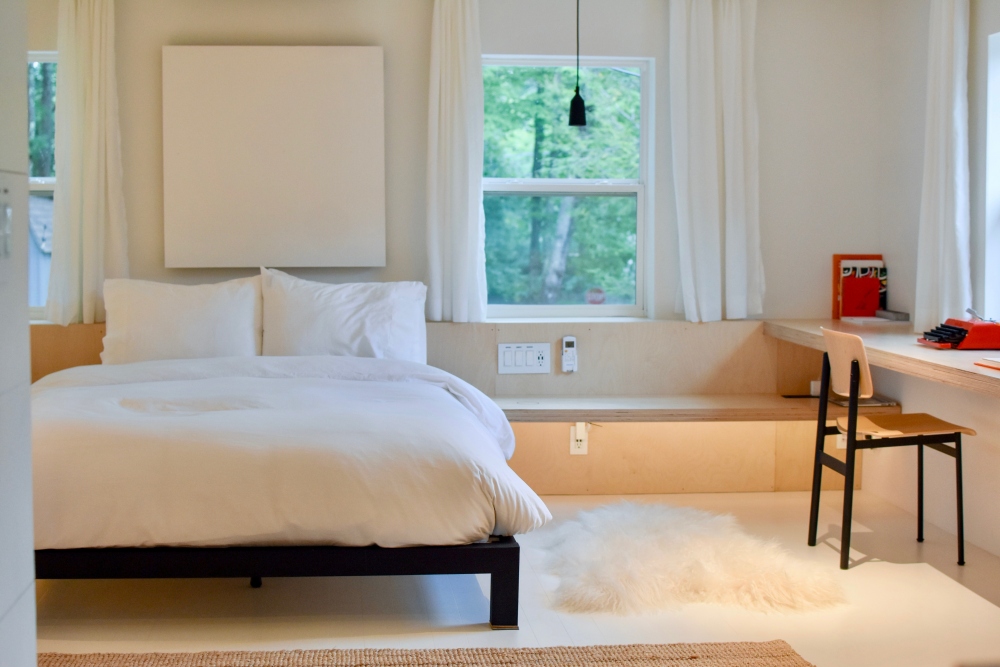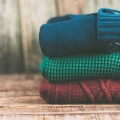What is a duvet cover? A duvet is a type of bedding consisting of a soft flat bag filled with down, feathers, wool, silk or a synthetic alternative, and typically protected with a removable cover, analogous to a pillow and pillowcase.
Duvet, often mistaken as a comforter, does not provide warmth the same way a comforter does.
While duvet is essential for your bed, it is better to be educated on how to choose what’s perfect for you. Choosing of duvet must also be appropriate with the season or weather, and the compatibility with your bed.
Always Check for Thread Count
What is thread count? It simply refers to the quality of the fabric, and it also indicates how many threads are contained in a square inch of fabric.
The higher the count of the fabric (400 for example), the softer the fabric. It feels better against your skin, although it’s more likely to be expensive. Whilst the lesser the count, it leads you to a rougher finish.
Nonetheless, George Street Linen Duvet Cover NZ points out that you should not compromise the quality of the thread to ensure softness you require, and also for the longevity of your duvet.
Look For Tog Ratings
Tog refers to the warmth or thermal resistance of a duvet. The higher the tog rating, the more warmth it can provide.
Whilst, higher tog rating is compatible with winter that will keep you warm, and lower tog rating for the summer that is enough to keep you well insulated. It is important that you know the purpose of your duvet.
For tog ratings, it is suggested to have 13.5 for winter, 4.5 for summer, and 10.5 for all year round duvet. For babies and young children, tog ratings must be no more than 4.5. But you can have one, and use velcro to attach another pair of the duvet to make it warmer.
Check Duvet Fillings
There are a couple of choices when it comes to duvet fillings, and must consider the materials that are contained in each type.
Down: Down is made of feathers, but usually the smaller ones, and provides the best of thermal optimization. They are soft, breathable, and light, hence the better option for all year round use.
If you are looking for the warmest of the down, be sure to get the ones with “100% down,” “pure down.” or “all down” on it to make sure you are getting the best quality. If it is less than 100%, that means it is combined with other types of fill. They commonly use geese or duck feathers on it. Whilst it is less expensive, it gives you low quality of warmth or insulation.
If you are allergic to feathers, get the ones that mention “sterilized down” to make sure the allergens are removed to help you sleep better.
Down alternatives: There are several types of down alternatives like wool, bamboo, cotton, polyester, and microfibre fills.
Wool is versatile, breathable and has good insulation. It is highly comfortable and good for all-season use. Bamboo, on the other hand, is antibacterial, anti-microbial, repels dust mites and molds, and best for people prone to allergies and highly suggested for summer use.
Cotton is highly breathable and lightweight, which is good if you wanted to feel cool. Polyester is durable and affordable, whilst it is best for frequent washing. And Lastly, Microfibre provides you a soft and luxurious feel.
See the Fill Power of Your Duvet
What is fill power? It simply refers to the measurement of the down’s fluffiness. It is reflected in the best quality of the down, whilst the ones that give you the best insulation.
Here is a guide to comfortable fill powers:
- Summer: Lightweight which contains 400 and below
- Winter: 600 to 800
- All year round: 400 to 600
- Extra warmth: 800 and up
See Fill Weight
Fill weight is to the amount of fill into the duvet. It is measured in ounces, and the higher the weight, the higher the warmth it provides.
A high fill power duvet has a low fill weight, so this high fill-power duvet is lighter than the ones that suit better for warmer weather because of its low fill power.
Analyze Duvet Construction
A good duvet needs to have a good construction so that the duvet will keep intact, and avoid creating lumps or uneven spread of the fill. Here is a guide for the construction type of the duvet:
- Baffle box: This is the superior type of construction wherein the down is contained in smaller squares, and each compartment has a sidewall in each of its sides (no shifting of the down).
- Quilt stitching: Sewn-through and elaborately patterned, hence keeping the fill in place.
- Channel: The feather and down filling is contained but freely moves around the channel. With this construction, you can change the warmth of the duvet by touching the fill up or down the channels.
- Gusset: This is a step-up of the baffle-box duvets. They have a greater gusset around the side of the duvet, hence it is thickest and loftiest.
Consider Duvet Sizes
When choosing your duvet, you need to consider which size is appropriate for the bed you have to avoid feeling uncomfortable, difficult to move around, or heaviness.
Here is the guide on which size you should buy:
- Single (135x200cm)
- Double (200x200cm)
- King (230x220cm)
- Super King (260x220cm)
- Emperor (290x235cm)
Wrap up
In buying a duvet, we should not settle for what is cheaper. But rather, we must buy which suits our needs, style, and most importantly the quality.
Be sure to know all the things you need to consider, to ensure that you are ready to get your new set of a duvet. Get the one that you can fully utilize, without compromising your comfort.







Recent Comments